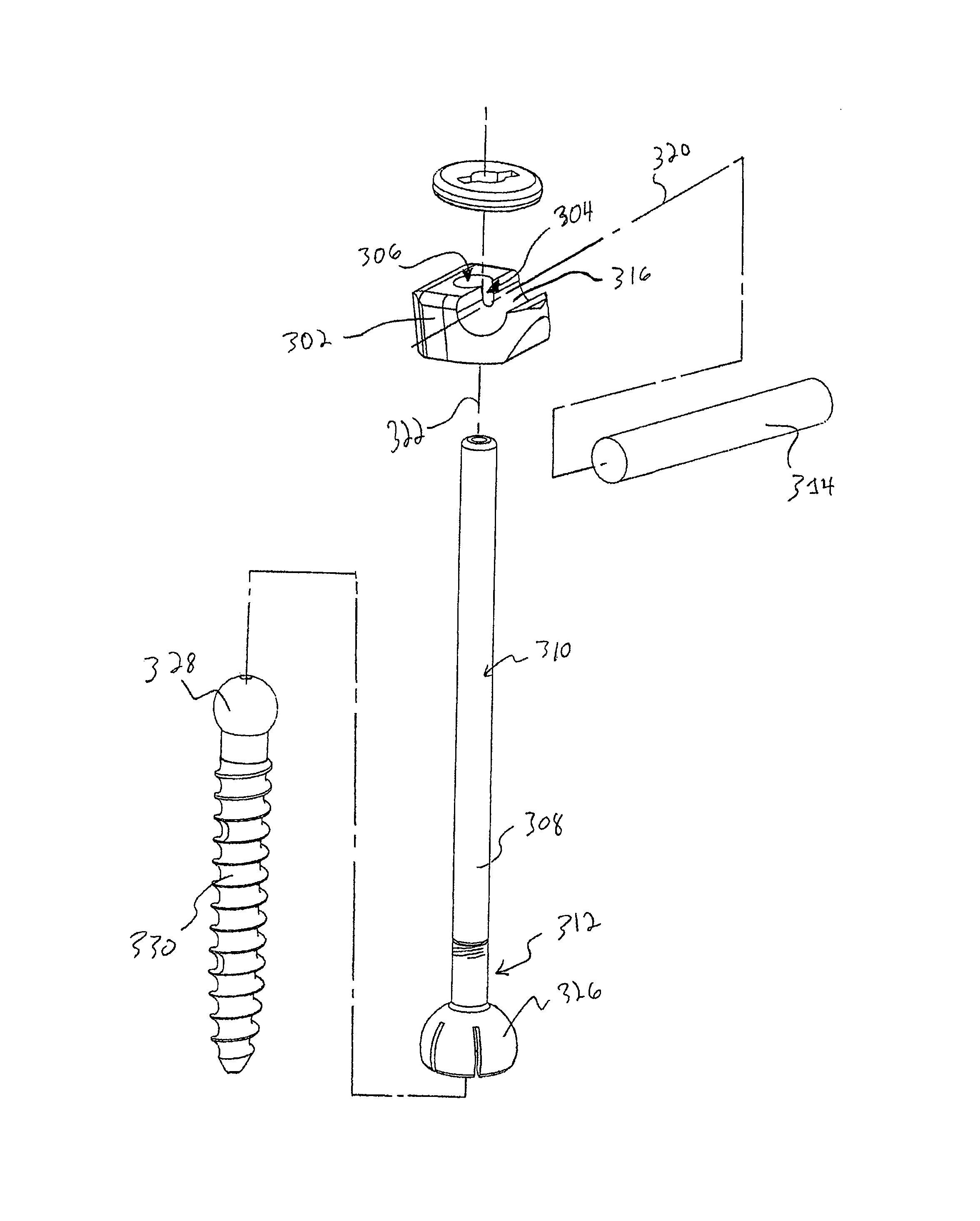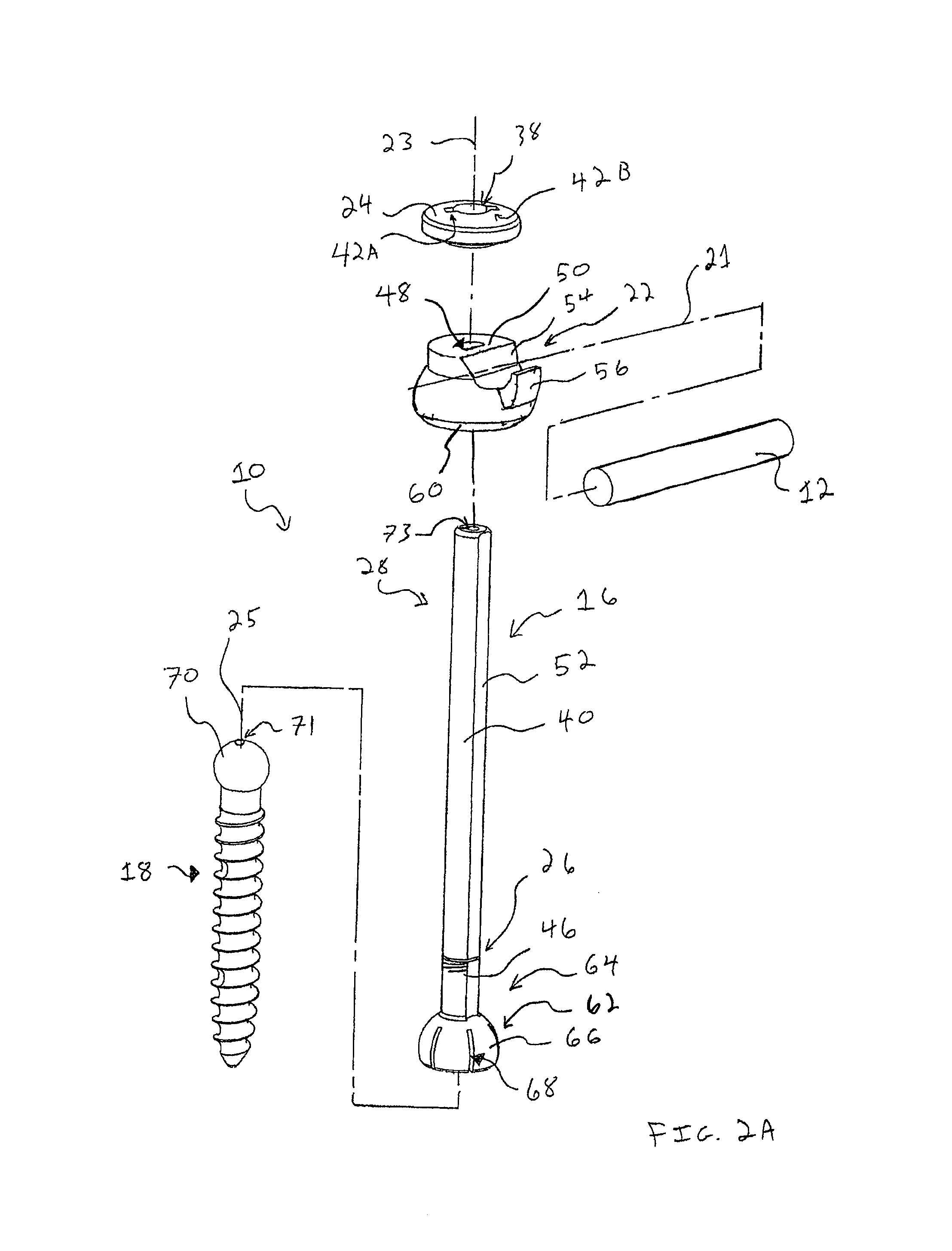Spinal fixation system and method
a technology of fixation system and spine, applied in the field of spine fixation system, can solve the problems that the use of surgical systems often becomes a complex task, and achieve the effect of minimizing the profile of the elongated member
- Summary
- Abstract
- Description
- Claims
- Application Information
AI Technical Summary
Benefits of technology
Problems solved by technology
Method used
Image
Examples
Embodiment Construction
[0039]In FIG. 1, a spinal fixation system 10 in accordance with one form of the present invention is depicted. The spinal fixation system 10 comprises a fixation element, such as a spinal rod 12, and a pedicle screw assembly 14 for securing the spinal rod 12 to a vertebra. The pedicle screw assembly 14 comprises a coupling device 15 and a bone screw 18. The coupling device 15 is operable to secure the spinal rod 12 relative to the bone screw 18. The coupling device 15 has an elongate member, such as guide member 16, for guiding the spinal rod 12 onto an open seat of the coupling device 15, such as a saddle body 22. With the spinal rod 12 received on the saddle body 22, a lock device, such as a locking cap 24, is fit onto and guided down along the guide member 16 and engaged with threads 46 of the guide member 16 to fix the spinal rod 12 against the saddle body 22.
[0040]As can be seen in FIGS. 1 and 2A, the spinal rod 12 rests upon a seating surface 54 of the saddle body 22 generally...
PUM
 Login to View More
Login to View More Abstract
Description
Claims
Application Information
 Login to View More
Login to View More - R&D
- Intellectual Property
- Life Sciences
- Materials
- Tech Scout
- Unparalleled Data Quality
- Higher Quality Content
- 60% Fewer Hallucinations
Browse by: Latest US Patents, China's latest patents, Technical Efficacy Thesaurus, Application Domain, Technology Topic, Popular Technical Reports.
© 2025 PatSnap. All rights reserved.Legal|Privacy policy|Modern Slavery Act Transparency Statement|Sitemap|About US| Contact US: help@patsnap.com



